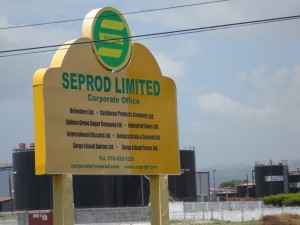 The Sunday Gleaner headline on the sugar production for 2017 is more shocking than the abysmally low production islandwide. Gleaner who captioned the story “Sweet smiles – 2016-2017 sugar crop gives main players reasons to hope.”
The Sunday Gleaner headline on the sugar production for 2017 is more shocking than the abysmally low production islandwide. Gleaner who captioned the story “Sweet smiles – 2016-2017 sugar crop gives main players reasons to hope.”
The reality there can be little hope for an industry that is losing billions of dollars and showing little sign of serious recovery.
The Gleaner report states,“Key stakeholders in the sugar sector are singing the praises of local manufacturers, who had to navigate a raft of challenges but still managed to produce a combined 87,990 metric tonnes of sugar from 1.13 million tonnes of cane for the just concluded 2016-2017 crop year.”
“Heavy rainfall in mid-May that left acres of cane fields inundated, numerous incidents of illicit cane fires in Clarendon, St Elizabeth and Westmoreland, as well as an abrupt end to production at Frome Estate were among some of the challenges faced by the industry, but Major Hugh Baker, general manager of Jamaica Cane Product Sales, remains upbeat for the future.”
 “When we consider all that would have transpired throughout the crop, I am personally optimistic for the future of the sector,” said Baker.
“When we consider all that would have transpired throughout the crop, I am personally optimistic for the future of the sector,” said Baker.
“It was a marginal increase of just 2,000 metric tonnes over last crop, but when we consider Appleton which would normally be producing 30,000 tonnes easily, just returning after a year’s absence, and Pan Caribbean’s decision to end production at Frome prematurely, this season has given us reason to hope,” added Baker.
With Appleton returning to production having been closed for all of the 2016 to produce just 2,000 tonnes more sugar is terrible by itself. Viewed against the background that in the late 1970s into the early 1980s the Frome factory produced over 70,000 tonnes of sugar, almost what the entire country now produces, reveals the terrible state the industry is in.
Monymusk used to produce around 60,000 tonnes, according to the Gleaner report Frome produced just 20,451 metric tonnes down from a forecast of 28,000 tonnes and Monymusk did a mere 11,230 metric tonnes. Huge losses are going to be made at those low levels.
There are only three factories that show any signs of hope. These are Duckenfield with a production of just 11,297 tonnes, which is not too far from capacity, Worthy Park Estate in with 26,076 metric tonnes, Appleton Estate managed to churn out a creditable 19,132 tonnes but should be doing close to 40,000 tonnes by now.

Sugar cane growing in the field.
Duckenfield suffers from two major problems, one is the window to reap canes effectively, is very narrow, ranging from December to April, outside of this time line weather conditions are not favourable, secondly, the acreage suitable for canes tend to be limited, the operators say there is more land on which more canes can be grown and on which a profitable sugar operation can be carried out. Appleton can get their tonnage up to much more than they did in 2017 but Frome and Monymusk are disasters zones already and will make huge losses with the level of production they are putting out and so it will only be a matter of time before they fold and when they fold we can forget sugar production in those areas, although some cane can go from both areas to Appleton and Worthy Park for some time.
There is a ready market for around 120,000 tonnes for normal consumption and manufacturing locally, with another 120,000 tonnes in the export market. We are not even producing enough for local consumption and show no signs of exceeding current levels. One would expect the government to be pulling out all the stops to try and address the issue so as to prevent the government getting back in the sector to save jobs as is the case in Trelawny but no one seems to be treating the crisis in the sector with any urgency.








